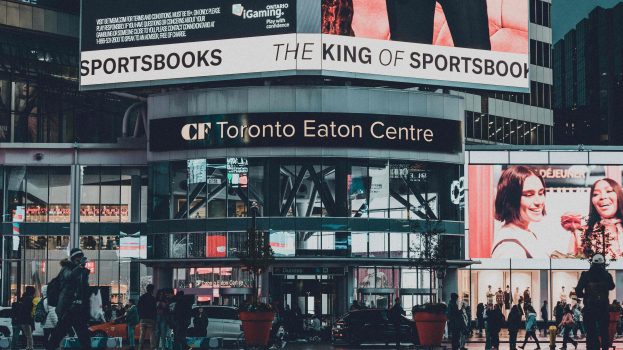
Brands have good reason for not wanting to let the first Truth and Reconciliation Day on Sept. 30 go by without acknowledgement, lest they be seen as not caring or doing their part to contribute to the goals of Reconciliation.
But treating it like another day on their marketing calendar will almost inevitably be seen as an opportunistic attempt to capitalize on the conversation, be it for profit or a simple PR boost.
“My initial reaction to seeing brands clamoring to do something is to shut up and leave it alone,” says Cory Pelletier, principal at consultancy CORE Communications and Marketing, who adds that the severity of what Indigenous communities have gone through, especially in recent months, should explain why he and many other people have that reaction.
“People by and large don’t appreciate what happened to the Indigenous population. That’s changing, but we found our dead and keep finding them and it’s confirming things our people and our families knew about for so long. There is a point where it does feel like they are saying, ‘We dug up more evidence of genocide, sorry no one listened to you, please buy a t-shirt.'”
The roadmap has already been laid out
Companies will need to accept that the public’s “why is a brand involved with this” response will be – justifiably – more easily set off today. If they want to be mindful of that, Mitch White, senior communications lead at Creative Fire, says the place they should start from is education.
“A lot of Canadians have grown up with Indigenous history being a section in a chapter in one social studies text book,” he says, adding that this is one of the rare occasions where “raising awareness” can actually be highly valuable.
White says a big thing that should serve as a guide is the Truth & Reconciliation Commission’s Calls to Action. Call 92 directs the corporate sector to provide Indigenous people with opportunities, educate staff on the history of Indigenous people within Canada, consult with Indigenous peoples before undertaking economic development projects and ensure Indigenous communities get long-term benefits from those projects.
And beyond that, calls 84 to 86 are directed at the media. While they were crafted with news outlets like CBC and APTN in mind, White says those also contain actions that are transferable to advertising; namely, that they educate the Canadian public about the history of Indigenous people in Canada, the legacy of residential schools and that stories reflect the full diversity of Indigenous communities today.
To that end, White says any communications today should be focused on education, following the stories the Truth & Reconciliation Commission brought forward and focusing on the subjects it asks companies to focus on. Further to that, they should turn their reach and platforms over to Indigenous people to tell their stories for themselves – including the more positive ones that reflect the triumphs and resilience coming out of their communities.
But the other thing the corporate sector needs to keep in mind is that Reconciliation is about action. And treating it like another communications project handled by the marketing department – instead of actually contributing to Reconciliation in a meaningful way – is missing the point entirely. This is not just one day, after all, but an ongoing process that requires foundational change, and it means being uncomfortable.
“In order to do effective reparations, you don’t just give $20 or $50, you do it to a point that you are uncomfortable,” White says. “It needs to disrupt your life and make it harder in some way, because that exercises your empathy. If you contribute enough that you’re nervous about paying your light bill or not having food, that’s the daily reality for marginalized communities.”
That applies to the corporate world as well and is a way to “take these completely empty gestures and make them mean something,” he says. Instead of simply participating in land acknowledgements, for example, make a commitment to the traditional inhabitants of the land where they do business and find what they think would be a good contribution to Reconciliation. Or, look at your own operations and see where it intersects with Indigenous people, and see if there is a way to make them feel more welcome internally, or to share the benefits of what they do on Indigenous land externally. And Pelletier points out that while the Orange Shirts and learning the history of residential schools are important, they are just one element of Reconciliation, and a company’s activities need to address that full mission.
Some companies will be held to a higher standard than others
For some companies, staying well away from the point of discomfort will result in something that feels hollow but largely doesn’t register for most of the population. But for other companies, a lack of effort could exacerbate an already tenuous history.
Hudson’s Bay drew criticism this week for social posts promoting the sale of this year’s Orange Shirt Day design. While the company worked with the Orange Shirt Society to be an official seller of the shirt, and would be giving all proceeds to the non-profit, a lack of clarity on that led several people to see it as an attempt to promote itself instead of the Orange Shirt Society and profit on the holiday, something that would be particularly egregious given the company’s role in Canada’s colonization.
Hudson’s Bay also attempted to educate followers on the origins of Orange Shirt Day in its social post, but described residential school survivor Phyllis Webstad as having “lost” an orange shirt she was excited about wearing on her first day of school – which some saw as softening the story she originally told in 2013, where she described how the shirt was ripped away and stolen from her, showing her that she didn’t matter to the rest of Canada.
An HBC spokesperson told CBC, which first reported the controversy, that the company recognizes its role in colonization and that working with the Orange Shirt Society was part of a commitment to Truth & Reconciliation. But, as Pelletier puts it, “You’re the cause of half this pain, so it feels like the easy way out, because it’s glossing over so much.”
Companies like Hudson’s Bay or rail operator CP are among the oldest in the country, which means their history often intersects with Canada’s own history of colonization and mistreatment of Indigenous people – be it Hudson Bay taking ownership of Indigenous lands from the 16th to 19th centuries or the construction of the Canadian Pacific Railway in the 1880s that displaced Indigenous people and helped further Canada’s colonial aims.
Even companies that don’t have a 100-year-plus history need to show a degree of forthrightness and what White describes as humility. That means honestly telling the story of how a company may have negatively impacted the well-being of Indigenous communities in the past as a way to move forward and what you’re doing to make up for that in the future – no matter how long that wound takes to heal.
(CP, for its part, does have an Indigenous Relations strategy, aimed at building “sustainable and mutually beneficial relationships with Indigenous communities in proximity to CP’s network.” Hudson’s Bay has made supporting Indigenous communities a part of the broader “Charter For Change” diversity and equity initiative, with charity Indspire being one of several beneficiaries of a $30 million commitment.)
 CP is putting a locomotive into service today that has been painted orange and bears the Orange Shirt Society logo, which the company says is an effort to spread awareness of the non-profit, as well as the history and culture of Indigenous people.
CP is putting a locomotive into service today that has been painted orange and bears the Orange Shirt Society logo, which the company says is an effort to spread awareness of the non-profit, as well as the history and culture of Indigenous people.
Pelletier points out that CP did a lot of things right: there’s no craven attempts at profit; the idea came from Jacob Hoffer, a 13-year-old Indigenous youth who wrote to the company with the idea; and CP consulted with the Orange Shirt Society on the idea’s implementation.
But it also shows that companies cannot treat Indigenous people as a monolith. Despite those consultations, and despite the fact that some First Nations see CP and companies like it as bringing economic opportunity, there are also those who will see what its history symbolizes.
“They did a much more open, transparent and involved job, and on the whole will ‘win’ in a situation like that, but there’s always going to be people who don’t forget, and I know people in my community who are going to see that and say, ‘Really? You guys are the ones talking about this?'” Pelletier says.
White adds that the orange train also feels like it lacks impact. After all, how many people are going to see that train, will they be able to notice the Orange Shirt Society logo as it speeds by and will they even recognize the orange paint as being different from the norm?
“It begs the question, what are they really sacrificing here?” he says, adding that some gestures can be more meaningful depending on who they’re coming from. “If you’re someone like Coca-Cola, and you’ve built your entire brand equity around the colour red, making all your packaging orange sends a much louder message.”
One example White believes gets the approach right is Tim Hortons. From today until Oct. 6, all of the proceeds generated from a special orange donut will be donated to the Orange Shirt Society and the Indian Residential School Survivors Society.
[iframe_youtube video = “FkqfuK6KMhM”]
 While the idea may seem simple, a big reason it works is because it came from Joe Quewezance, Mitch Shuter and Shane Gottfriedson – a former Tk’emlups te Secwepemc First Nation chief and former B.C. regional chief for the Assembly of First Nations – who co-own a Tims location near Kamloops. They helped create the campaign by working with other Indigenous franchisees representing a swath of different communities across Canada, including Landon Miller, who ran a similar, grassroots campaign at his restaurant on the Six Nations of the Grand River territory in the days following the discovery at the Kamloops residential school.
While the idea may seem simple, a big reason it works is because it came from Joe Quewezance, Mitch Shuter and Shane Gottfriedson – a former Tk’emlups te Secwepemc First Nation chief and former B.C. regional chief for the Assembly of First Nations – who co-own a Tims location near Kamloops. They helped create the campaign by working with other Indigenous franchisees representing a swath of different communities across Canada, including Landon Miller, who ran a similar, grassroots campaign at his restaurant on the Six Nations of the Grand River territory in the days following the discovery at the Kamloops residential school.
The effort is also potentially highly impactful on the education front: with 4,000 Tim Hortons restaurants across Canada participating, there is a real opportunity to start conversations, be it between parents and children that see the donut in the case or coworkers who have some brought to them at the office or job site.
“This came from Indigenous people, they are getting the benefits, and it has the potential to really move the needle on education,” White says.























